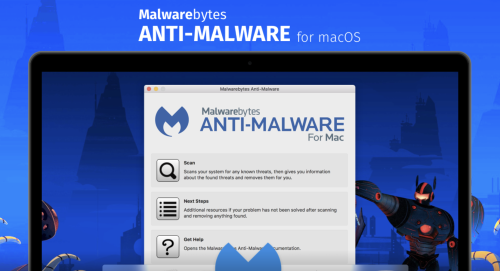eivindsimensen
Posts:
3
Joined:
Sep 07, 2025
Status:
Offline
Posted Sat Sep 13, 2025 5:48 pm...
The internet, as most people know it, is just the tip of the iceberg. Beneath the surface lies a vast, encrypted realm known as the Dark Web—a place shrouded in secrecy, myth, and controversy. But what is the Dark Web really, and why does it matter?
Understanding the Layers of the Web
To grasp the concept of the Dark Web, it's helpful to break the internet into three layers:
Surface Web: This is the visible part of the internet—websites indexed by search engines like Google and Bing. It includes news sites, social media, and online stores.
Deep Web: Content not indexed by search engines, such as private databases, academic journals, and password-protected sites.
Dark Web: A small portion of the Deep Web that requires special software (like the Tor browser) to access. It’s intentionally hidden and designed for anonymity.
🕵️♂️ How the Dark Web Works
The Dark Web operates on networks like Tor (The Onion Router), which routes traffic through multiple servers to obscure users’ identities and locations. Originally developed by the U.S. Navy for secure communication, Tor was later released as open-source software to encourage widespread use and enhance anonymity.
Accessing the Dark Web typically involves:
Downloading the Tor browser
Navigating to “.onion” sites (not accessible via regular browsers)
Using a VPN for added security
⚖️ Dual Nature: Haven or Hazard?
The Dark Web is a paradoxical space. On one hand, it offers a lifeline for:
Whistleblowers and journalists operating under oppressive regimes
Privacy advocates seeking refuge from surveillance
Activists organizing without fear of censorship
On the other hand, it’s notorious for illegal activities:
Darknet markets selling drugs, weapons, and counterfeit documents
Cybercrime services like hacking tools and stolen data
Scams and frauds, where users are often duped by fake vendors
🚨 Risks and Dangers
Venturing into the Dark Web isn’t without peril:
Malware infections from malicious downloads
Phishing scams targeting personal data
Legal consequences if engaging with illicit content
Exposure to disturbing material that can be psychologically harmful
Even passive browsing can attract unwanted attention if proper precautions aren’t taken.
🔐 Staying Safe
If curiosity leads you to explore the Dark Web, here are some essential safety tips:
Use a VPN and the Tor browser
Avoid downloading unknown files
Never share personal information
Stick to verified directories and forums
Be aware of the legal boundaries in your country
🧠 Final Thoughts
The Dark Web is neither entirely evil nor entirely virtuous. It’s a digital frontier where anonymity reigns—used by both heroes and villains. Understanding its structure, purpose, and risks is crucial in an age where privacy and cybersecurity are more important than ever.
Whether you're a tech enthusiast, a journalist, or simply curious, the Dark Web reminds us that the internet is far deeper than it appears—and that knowledge is the best defense against the unknown.
Understanding the Layers of the Web
To grasp the concept of the Dark Web, it's helpful to break the internet into three layers:
Surface Web: This is the visible part of the internet—websites indexed by search engines like Google and Bing. It includes news sites, social media, and online stores.
Deep Web: Content not indexed by search engines, such as private databases, academic journals, and password-protected sites.
Dark Web: A small portion of the Deep Web that requires special software (like the Tor browser) to access. It’s intentionally hidden and designed for anonymity.
🕵️♂️ How the Dark Web Works
The Dark Web operates on networks like Tor (The Onion Router), which routes traffic through multiple servers to obscure users’ identities and locations. Originally developed by the U.S. Navy for secure communication, Tor was later released as open-source software to encourage widespread use and enhance anonymity.
Accessing the Dark Web typically involves:
Downloading the Tor browser
Navigating to “.onion” sites (not accessible via regular browsers)
Using a VPN for added security
⚖️ Dual Nature: Haven or Hazard?
The Dark Web is a paradoxical space. On one hand, it offers a lifeline for:
Whistleblowers and journalists operating under oppressive regimes
Privacy advocates seeking refuge from surveillance
Activists organizing without fear of censorship
On the other hand, it’s notorious for illegal activities:
Darknet markets selling drugs, weapons, and counterfeit documents
Cybercrime services like hacking tools and stolen data
Scams and frauds, where users are often duped by fake vendors
🚨 Risks and Dangers
Venturing into the Dark Web isn’t without peril:
Malware infections from malicious downloads
Phishing scams targeting personal data
Legal consequences if engaging with illicit content
Exposure to disturbing material that can be psychologically harmful
Even passive browsing can attract unwanted attention if proper precautions aren’t taken.
🔐 Staying Safe
If curiosity leads you to explore the Dark Web, here are some essential safety tips:
Use a VPN and the Tor browser
Avoid downloading unknown files
Never share personal information
Stick to verified directories and forums
Be aware of the legal boundaries in your country
🧠 Final Thoughts
The Dark Web is neither entirely evil nor entirely virtuous. It’s a digital frontier where anonymity reigns—used by both heroes and villains. Understanding its structure, purpose, and risks is crucial in an age where privacy and cybersecurity are more important than ever.
Whether you're a tech enthusiast, a journalist, or simply curious, the Dark Web reminds us that the internet is far deeper than it appears—and that knowledge is the best defense against the unknown.




